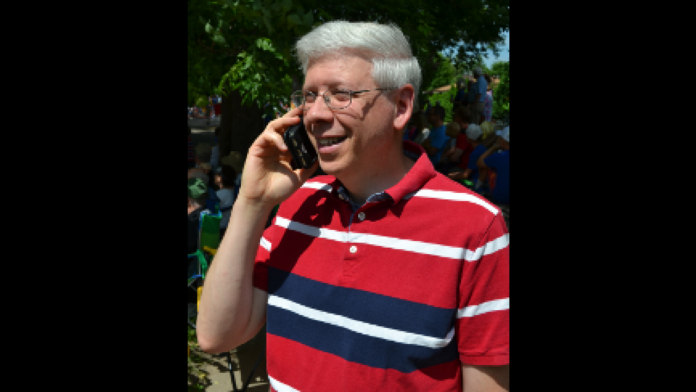EDINA, Minn. – Edina School Board Member David Goldstein is running for a second term this year and his campaign plans on addressing climate change politics at the very local level.
“I think from a national policy perspective our government has made a decision that this is an issue best handled at grass root levels,” Goldstein told Alpha News.
Climate change is one of the five issues prominently highlighted on Goldstein’s website. The other four are stewardship; money; diversity and inclusion; and teachers and families.
“Climate change is the most significant problem facing our children. It is going to impact their economic opportunities, health, and overall quality of life,” reads the section on climate change. “The Edina school district needs to decrease its carbon footprint, recognize and address the feelings of sadness and helplessness that many of our students are feeling, and prepare and empower our students to make positive contributions.”
According to Goldstein, students in the district have demonstrated a deep concern for the planet they are going to inherit. Goldstein compared their passion, activism, and fears as similar to his childhood growing up fearing nuclear holocaust and running bomb drills in school.
“I think that working together for positive change makes students feel empowered and hopeful,” Goldstein said. “But I think students who understand what’s at risk in terms of reduction to our quality of life and public health risks are very concerned about what kind of world they’ll grow up in.”
When asked if there were other policy issues the school district should specifically seek to engage students on, Goldstein did not name any. However he did say students should be freely able to engage on any range of topics.
“I’m fully supportive of students having opportunities to express themselves and learn how to discuss conflicting viewpoints on important issues,” Goldstein said.
Goldstein has a number of ideas on how to reduce the school’s footprint. Currently, the district is in the midst of a renovation projects encompassing most of the district’s buildings which have included efforts to increase efficiency. This includes upgrades to building heating systems, and installation of LED lights among other changes.
“We’ve recently built a new bus garage,” Goldstein said. “In the longer run I would love to see solar panels on the site and start transitioning to some electric power busses.”
Some school districts in California currently have electric buses, which is where Goldstein said he got the idea from. He concedes that a move to electric buses comes with a number of challenges, and is a long ways off.
“Optimistically I think it’s at least four or five years away,” Goldstein said. “The district owns its own buses, we retire some and buy some new ones each year. The opportunity to bring them in is there, the problem is there’s no real supplier of those buses.”
The California school districts using electric buses have effectively built them themselves, using premade kits in order to create their own, according to Goldstein.
In 2014, the United States totaled 6.87 billion metric tons of greenhouse gas emissions, about 15 percent of global emissions. Minnesota accounted for 168.4 million tons of that, roughly 2.5 percent of U.S. totals. The entire state of Minnesota therefore accounts for three-eighths of a percent of global emissions.












